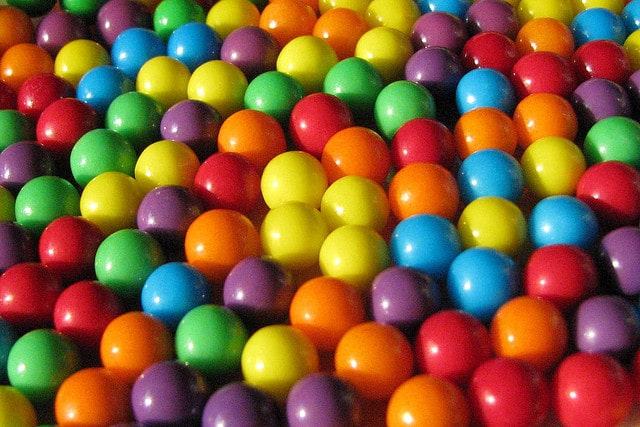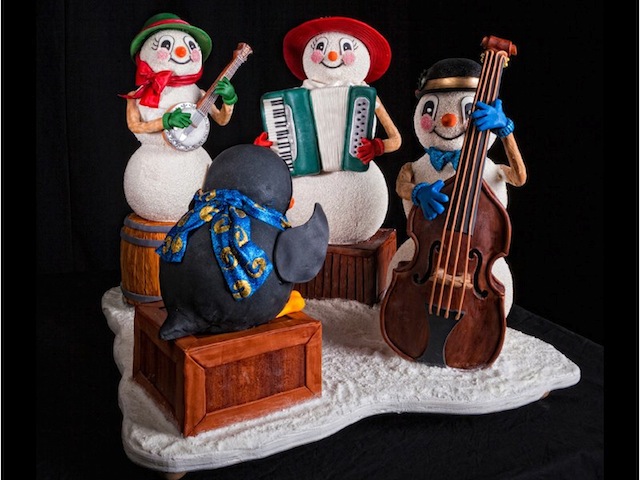
With Christmas quickly approaching, sights, sounds and smells of the season warm the cooling winter air and brighten dark nights. Among the colorful lights and cheery decorations, gingerbread houses have always stood out as being (almost) too ornamental to justify eating.
Adorned with succulent gumdrops and candies atop rough German-style gingerbread, these houses bear no direct relation to any other Christmas celebration, despite being a tradition in their own right for hundreds of years. As a result, they have a rather unique, and still delicious origin.
The History Of Gingerbread
Gingerbread has been around for thousands of years, since the times of the ancient Greeks and Egyptians. During its early days, it was baked to be firm so that it could be used for religious ceremonial purposes. Eventually, an Armenian monk brought it to Europe in 992. By this period, gingerbread baking was already quite sophisticated, and specially made molds were used to create images of saints and other important religious characters out of the bread.
The primary use of gingerbread continued to serve a religious purpose through to the 17th century, when it finally became associated with Christmas holidays. As the creation of religious icons — even in edible forms — was seen as a sacred and prestigious practice, European royalty of the time only permitted gingerbread to be prepared by specially trained gingerbread guild members except during Christmas and Easter. As a result, most people could only enjoy the sweet dessert during this time of the year.

Hard candy makes for great gingerbread house decor. Photo courtesy of terren in Virginia.
The Growth Of Gingerbread
Gingerbread patterns and designs continued to become increasing detailed and intricate. Russian gingerbread makers began crafting some of the first gingerbread men and women. These breads often took shapes similar to matryoshka dolls or kolobok, a round, Russian gingerbread man. Even still, the “house” concept wasn’t introduced until 200 years later through the Brothers’ Grimm tale of Hansel and Gretel. The tale’s witchy ginger dwelling was quickly adapted to fit a more festive role, with a merry winter wonderland-esque cottage theme.
These new houses adopted the German style of bread, having a German origin and taking advantage of the harder consistency. This provides enough support to be able to design taller and more fanciful structures. With gingerbread’s long history of being used as a decorative edible substance, gingerbread house-making quickly became an art.

The Adult 2nd Place Winner, “Snowman Jamboree” by Linda Carney. Photo courtesy of The Omni Grove Park Inn.
The National Gingerbread House Competition
Today, there’s no better place to see this architectural ingenuity showcased than at the National Gingerbread House Competition in Asheville, North Carolina. Entering its 21st year, the competition has built a reputation for attracting 400 of the best gingerbread house designers from across the nation each year.
The competition is held every year in the Omni Grove Park Inn. Entries are featured throughout the hotel from November through January and can be publicly viewed (for free) Sunday through Thursday from 9am to 9pm. Hotel, restaurant and spa guests also have access to the viewing area 24 hours a day, 7 days a week. So although the house (or horse, or toy box) must be 100% edible and 75% gingerbread, it must be able to survive months of showmanship.
Submissions can be entered from both teams and individuals, and are broken down into adult, teen, youth and child categories. Since transporting the creations is such a delicate task, an additional prize was introduced and is awarded to the entrant who had to travel the furthest distance to get to the competition. From there, up to nine judges select the winners in each category and an overall winner. Judges vary each year with everyone from the designer of Princess Diana’s wedding cake to the curator of the Department of Drawings and Prints at New York’s Metropolitan Museum of Art. This panel makes their decision based on the following five criteria:
- Overall Appearance
- Originality and Creativity
- Difficulty
- Precision
- Consistency of Theme
The overall winner receives a $5,000 check, 2-night Club Floor stay at The Grove Park Inn, dinner and breakfast for two at one of the inn’s dining outlets, and a prize package from Chef Nicolas Lodge.

Grand Prize Winner Ann Bailey’s gingerbread creation, “The Three Gifts”. Photo courtesy of The Omni Grove Park Inn.
Ann Bailey, A Master Gingerbread Artist
While holiday cheer (and maybe some eggnog) helps to keep the competition friendly, the top entries take serious skill to match the judges’ reputations. Last year’s winner Ann Bailey revolutionized the gingerbread world with her biblical scene featuring three wisemen and a camel standing under a stone archway. The highly detailed masterpiece took over 200 hours to recreate, with high levels of rippling detail unlike any other gingerbread creation ever seen. She was able to work the fine details in by coating traditional bread in a moldable paste of gingerbread, gelatin, corn syrup and olive.
While years of pastry experience may have something to do with it, Bailey says the most important points of creating a gingerbread gem are finding an idea, building a prototype out of wood or paper, doing background research, and the final baking, carving and assembling, starting with the all-important stable base. By keeping these guidelines in mind, Bailey’s creation was also able to serve the (true) gingerbread purpose of tasting deliciously, despite being on display for months on end.

Teen 3rd Place Winner, “Yellow Submarine” by Lilli McFerrin. Photo courtesy of The Omni Grove Park Inn.
In The True Spirit Of Gingerbread
Not all gingerbread creations will be national competition winners, however. Even if a gingerbread house would have failed every housing inspection test in the book, the true spirit of the holidays is to get together with friends and family and appreciate everything life has to offer. There’s no better way to do so than by gathering together to create something that is both artistic and delicious.
Along with countless other classic lines, William Shakespeare summed gingerbread up pretty well with: “And I had but one penny in the world, thou should’st have it to buy gingerbread.”
Top photo – Gingerbread House. Photo courtesy of Carrie Stephens.
Contributed by guest author Judi Zienchuk.

Jessica Festa is the editor of the travel sites Jessie on a Journey (http://jessieonajourney.com) and Epicure & Culture (http://epicureandculture.com). Along with blogging at We Blog The World, her byline has appeared in publications like Huffington Post, Gadling, Fodor’s, Travel + Escape, Matador, Viator, The Culture-Ist and many others. After getting her BA/MA in Communication from the State University of New York at Albany, she realized she wasn’t really to stop backpacking and made travel her full time job. Some of her most memorable experiences include studying abroad in Sydney, teaching English in Thailand, doing orphanage work in Ghana, hiking her way through South America and traveling solo through Europe. She has a passion for backpacking, adventure, hiking, wine and getting off the beaten path.








